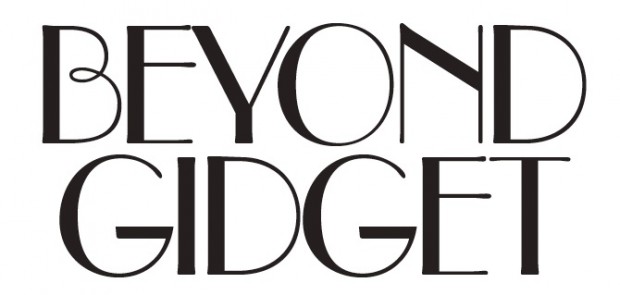
With not much longer to go now until the first stop of the ASP Women’s World Tour (the Beachley Classics are currently still TBA on their website) and inspired by an interesting experience on Why Women’s Surfing is in the Deep End, we found it perfect timing to spark up the debate on the image of the female surfer again, that we started with Cori Schumacher’s piece in our August/September mag last year. Do you think she’s right?
Words by Cori Schumacher, illustration by Eve Bracewell
The image that has been manufactured and recycled by the surf industry is one that is narrowly defined – despite multiple generations of women participating in surfing.
Research shows that women are more likely to buy from brands that use a mix of different body shapes in their ads yet the 1960s Gidget surf girl stereotype persists. Why is that and why does it matter?
The mainstream surf industry has grown from humble backyard beginnings to a billion dollar, global industry centred around an active beach lifestyle. The image that has been manufactured and recycled by the surf industry of the feminine side of this lifestyle is one that is narrowly defined, despite multiple generations of women participating in surfing. What, if anything, has changed about this image since the prototypical surfer girl made her debut in the 1959 Hollywood movie Gidget? And are we heading in the right direction?
There have been myriad types and styles of female surfer dating back to the wahines surfing in Hawaii before the arrival of Captain James Cook in 1778. Despite this diversity, the narrowly defined, constricting Gidget-image of the female surfer (young, white, thin, blonde, bikini-clad, boy-crazy, heterosexual) has been recycled over generations by the surf industry. The beach backdrop of the Hollywood movie, Southern California’s Malibu, was “the exact spot on earth where ancient surfing became modern surfing,” according to surf journalist Paul Gross. It was during this era, at this spot, and as a direct consequence of the Hollywood movie that the surf industry had its own beginnings. The Gidget-image is the very image that gave birth to the surf industry as a whole, which may explain the industry’s loyalty to this image. This is particularly unfortunate for the surf industry given a recent study by Ben Barry [a Canadian women’s health advocate who runs an model agency that specialises in diverse shapes and sizes] who found that women’s purchase intentions increase up to 300 per cent when exposed to diverse body styles and types in advertising.
The Gidget-image is the very image that gave birth to the surf industry as a whole, which may explain the industry’s loyalty to this image.

Recently, the California Gidget-image has taken a turn towards the overtly sexual. This comes after a decade of female surfers who embraced their strength and pushed the level of the competitive sport beyond the meagre recognition and salaries of the 1980s. Once again, it was the image of the female surfer that launched an economic burst for the industry as a whole through the 1990s. Lisa Andersen, the iconic “Roxy girl”, captured the attention and admiration of a generation of would-be female surfers along with the incredible success of the women’s boardshort in 1996. This shift ignited a wildfire of all-girl surf schools, girl surf movies, and female surf lifestyle clothing lines across surf brands. Not to mention magazines such as this one. This paralleled a shift in mainstream corporate America as niche markets (like the female athlete) were targeted in advertising. All of a sudden it was perfectly acceptable to be a female athlete. Women’s surfing was progressing, but the image of the prototypical female surfer remained nearly identical to that of the 1950s. Only the fashion had changed. As the generation of female surfers that saw this shift “aged out” of the tour (decided to call it quits or in some cases lost sponsors), a new generation of female surfers slid into view.
The trend to an overtly sexual image is not simply about titillating the male gaze. It is symptomatic of how both men and women in surfing view a narrowly defined “femininity” as tied inextricably to the way one looks versus what one does.
One of the major distinguishing features of this new generation of female surfers is how “sexy” and “bang-able” they are. The California image of the surfer girl remains the dominant image, yet is now being celebrated for showing skin in ever more suggestive poses. The ubiquitous bikini (female surfing’s sports uniform) became a marker of femininity and heterosexuality in the 1990s, but simply wearing it is no longer enough to satisfy the new feminine ideal. Now one must wear an even skimpier bikini and suggestively flirt with the camera/audience. Even the most anticipated all-female surf movie of 2011, Nike’s Leave a Message, though filled with mind-blowing surfing, included shots of the ladies wrestling in the sand in their bikinis and throwing searing “come get me” glances over their shoulders. This trend is not simply about titillating the male gaze. It is symptomatic of how both men and women in surfing view a narrowly defined “femininity” as tied inextricably to the way one looks versus what one does. In a line-up, it is difficult to see who is male and who is female, even more so now that the girls are ripping “like boys”. The newest fashioning of the female surfer image is a further attempt at alleviating a persistent gender anxiety found in surfing.
So what are we to make of this sexy new trend? A trend, incidentally, being paralleled in the larger culture. The key questions to ask when analysing the newest version of the old Gidget-image are: 1) Does sexualising female surfers benefit women’s professional surfing in general? 2) How does sexualising female surfers impact surf culture?
 First, it is important to note that each female surfer is her own woman, making her own choices, based on her own experiences. That said, there are overlapping trends among many female surfing professionals (the role models of female surfing) who are making personal choices that have far-reaching consequences. These consequences are what we are concerned about, specifically how this trend is benefiting the current ability of all professional female surfers to showcase their surfing abilities at top-level locations, in great conditions, in an environment that respects them, pays them well, and treats them with dignity. It would be easy to point to the few individuals who are making more money in sponsorships than at any other point in history as a sign that “the girls are doing alright”, but the exceptions are not indicative of the overall health of professional surfing. A few women may get paid top dollar but the rest are left to scramble for meagre hand-outs.
First, it is important to note that each female surfer is her own woman, making her own choices, based on her own experiences. That said, there are overlapping trends among many female surfing professionals (the role models of female surfing) who are making personal choices that have far-reaching consequences. These consequences are what we are concerned about, specifically how this trend is benefiting the current ability of all professional female surfers to showcase their surfing abilities at top-level locations, in great conditions, in an environment that respects them, pays them well, and treats them with dignity. It would be easy to point to the few individuals who are making more money in sponsorships than at any other point in history as a sign that “the girls are doing alright”, but the exceptions are not indicative of the overall health of professional surfing. A few women may get paid top dollar but the rest are left to scramble for meagre hand-outs.
Despite women’s surfing gaining relevance, respect, and exposure over the last 20 years, women’s surf events are being held in often poor conditions, with nearly half the events than in years past.
Despite women’s surfing gaining relevance, respect, and exposure over the last 20 years, women’s surf events are being held in often poor conditions, with nearly half the events than in years past. Even more frustrating is the fact that surf periodicals continue to trivialise the female surfer, asking questions in interviews like “Is it difficult to surf with boobs?” or “Do you worry about sharks while on your period?” or running features like “Waves are Women: Please no red tides.”
The second question revolves around the impact the current sexualising trend has on surf culture, specifically, the youth. The American Psychiatrists Association reported on the effects of such trends in 2010 (The Report of the APA Task Force on the Sexualisation of Girls can be found in its entirety online). Among the many results found within the report (ranging from the effects of sexualisation on the mental, emotional, sexual, and physical landscapes of boys, men, women, and society as a whole), were studies that linked sexualisation with three of the most common mental health problems of girls and women: eating disorders, low self-esteem, and depression or depressed mood. These states of body anxiety affect performance in a tangible way. In one relevant study, college students were asked to try on and evaluate either a swimsuit or a sweater. While they waited for 10 minutes in a dressing room wearing the garment, they were asked to complete a maths test. The results revealed that young women in swimsuits performed significantly worse on the math problems than did those wearing sweaters. No differences were found for young men. Thinking about the body, the study concluded, and comparing it to cultural ideals detrimentally fragments the attention of women.
Thinking about the body and comparing it to cultural ideals detrimentally fragments the attention of women.
Surfing itself, as with many other physical activities, can be a safe space for many women and girls where they can escape from these sexualising trends in the larger culture. However, if these trends are allowed to penetrate and persist, or are even encouraged in surf culture, women and girls lose an important means to combat a real danger to their wellbeing. The implication here is that surfing can be a genuinely empowering activity (vs. a false empowerment that relies on external attention and rewards), if it is not accompanied by the sexualisation of the female surfer body.
The women in Ben Barry’s study commented that what inspires them most in representations of women is “glamour, artistry, and creativity.” Rather than focusing on the female surfer’s “bang-ability”, surf marketing ought to listen to what actually inspires women, instead of perpetuating an image that aggravates gender and body anxiety.
Surfing can be a genuinely empowering activity (vs. a false empowerment that relies on external attention and rewards), if it is not accompanied by the sexualisation of the female surfer body.





